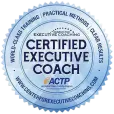
Timing is Everything
“He will win who knows when to fight and when not to fight.”
Timing can make or break a business. Sun Tzu understood this well—acting too soon wastes resources while waiting too long risks losing your advantage. For small business owners, knowing when to act is one of the hardest but most important skills to master.
Take Maple Valley Inn, a cozy bed and breakfast. For years, guests have asked if spa services were available. The owner knew adding a spa could attract more visitors, but how could they know if it was the right time? Acting too quickly might strain their budget while hesitating could let competitors seize the opportunity. The answer lies in preparation, observation, and strategy—mastering the art of timing.
Winning Before the Fight: How Preparation Creates Perfect Timing
“Victorious warriors win first and then go to war, while defeated warriors go to war first and then seek to win.”
Good timing doesn’t happen by chance—it’s built on preparation. Sun Tzu teaches that success comes to those who lay the groundwork first, ensuring they’re ready to act decisively when the moment arrives.
Preparation builds confidence. A business owner who prepares thoroughly knows what it takes to seize opportunities and isn’t caught off guard by sudden changes.
Example: The owner of Turning Pages Bookstore wanted to host author events but worried about whether the timing was right. Instead of rushing, she spent six months building relationships with local authors, surveying customers, and creating a welcoming event space. When the first event launched, the turnout was modest—about 15 people—but it showed enough promise to continue. By refining their approach and expanding their marketing, attendance grew steadily over the next year, eventually becoming everything the owner had hoped for.
Challenge: Think about an opportunity you’ve been considering but haven’t acted on yet. Write down three specific steps you could take to prepare for it. For example, you might need to gather customer feedback, secure funding, or test the concept on a smaller scale. Commit to completing one of these steps this week to move closer to your goal.
Spotting the Right Moment: How to Read the Signs
“If you know the enemy and know yourself, you need not fear the result of a hundred battles.”
Timing isn’t just about preparation—it’s about recognizing when conditions are right to act. Sun Tzu emphasizes the importance of observation: understanding both your internal readiness and the external signals around you.
Internal readiness means asking whether your team, finances, and operations are prepared. External signals include market trends, customer demands, or even competitor activity that suggests the opportunity is ripe.
Example: The owner of Poppy’s Pastries noticed a growing demand for gluten-free baked goods. Rather than diving in immediately, they surveyed customers, tested recipes, and trained staff. When the new items launched, they sold steadily—not overwhelmingly—but enough to establish a loyal gluten-free customer base. Over time, this niche became a reliable part of their business.
Challenge: Audit your business and your market for overlooked opportunities. Are there trends or customer needs you’ve noticed but haven’t acted on? Identify one gap and outline the steps you need to take to address it.
Too Soon, Too Late, or Just Right: Avoiding Timing Pitfalls
“He will win who, prepared himself, waits to take the enemy unprepared.”
Bad timing often takes two forms: rushing in without preparation or hesitating too long. Both can be costly.
Acting too soon leads to waste, inefficiency, and frustration. Waiting too long risks losing momentum or letting competitors take the lead.
Example: Hearthstone Café’s owner wanted to expand their menu to include dinner service. Excited by the idea, they launched without testing recipes or gauging customer interest. The rollout was chaotic—pricing was inconsistent, and staff struggled with the new workflow. After a frustrating few months, they paused dinner service and took time to reassess. They tested menu items with a limited weekend offering, adjusted pricing, and retrained staff. When dinner service relaunched, it ran much more smoothly, attracting a consistent, loyal crowd.
Challenge: Reflect on a recent decision where timing played a role. Did you act too quickly, or did hesitation hold you back? Write down what went wrong and what you’d do differently next time. Then pick an upcoming decision and outline how you’ll ensure the timing is just right.
Opportunities Evolve: Why Adaptability Matters
“Opportunities multiply as they are seized.”
Timing isn’t static. Sun Tzu reminds us that opportunities often shift and grow as you act on them. Being adaptable allows you to adjust your approach and maximize the potential of the moment.
Running a small pilot or test is one of the best ways to refine your timing. It allows you to gather feedback, identify flaws, and improve before fully committing.
Example: The owner of Maple Valley Inn wanted to introduce “Twilight Picnics” for couples. They tested the idea over a single weekend, offering picnic baskets and blankets under the stars. Turnout was lower than expected, but feedback showed that better marketing and clearer instructions would improve results. With those adjustments, the picnics became a more successful offering the following season.
Challenge: Identify a project or idea you’ve been hesitant to launch. How could you test it on a smaller scale? Plan a pilot program that allows you to gather feedback and refine your approach before committing fully.
Direct vs. Indirect Timing: Creating Opportunities When None Exist
“In battle, there are not more than two methods of attack—the direct and the indirect; yet these two in combination give rise to an endless series of maneuvers.”
Not all opportunities are obvious. Sun Tzu teaches that combining direct timing with indirect strategies can create powerful results.
Direct timing involves acting on clear opportunities, like holiday promotions or trending products. Indirect timing means creating opportunities by observing gaps in the market or unmet customer needs.
Example: The owner of Morning Roast Café planned a promotion for National Coffee Day, offering discounts on specialty drinks. At the same time, they introduced gift cards based on frequent customer feedback. While the promotion brought in a surge of customers, the gift cards created long-term loyalty and recurring revenue.
Challenge: Review your calendar for direct timing opportunities, like holidays or local events. Then think about indirect opportunities—are there unmet needs your business could address? Write down one idea for each and create a plan to execute them.
Patience Pays Off: Knowing When to Wait and When to Act
“The good fighters of old first put themselves beyond the possibility of defeat, and then waited for an opportunity of defeating the enemy.”
Sometimes, the smartest thing you can do is wait. Acting before you’re ready can backfire. But waiting isn’t about doing nothing—it’s about preparing, observing, and positioning yourself for the right moment.
Example: The owner of Poppy’s Pastries dreamed of opening a second location. Instead of rushing, they spent two years refining their processes, saving capital, and building a loyal customer base. When a prime location became available, they were ready to act. The second shop didn’t become an overnight success, but it gradually built a solid base of regular customers and became a profitable extension of their brand.
Challenge: Think about a big decision you’ve been holding off on. Are you waiting because you’re preparing, or because fear is holding you back? Write down what would make you confident enough to move forward and outline how to get there.
Mastering the Art of Timing: Your Next Steps
Sun Tzu’s wisdom reminds us that timing is both a skill and an art. Acting at the right moment isn’t luck—it’s preparation, observation, and adaptability.
Your next steps:
- Think about a recent decision where timing mattered. Was your approach successful? If not, what will you change next time?
- Identify one opportunity and create a plan to prepare for it fully.
- Look ahead at your business calendar. Are there moments where timing could make or break your strategy? Plan now to ensure you’re ready.
Timing isn’t just about making decisions—it’s about making thoughtful, deliberate choices that position your business for success. When preparation meets opportunity, success becomes a matter of when, not if.




